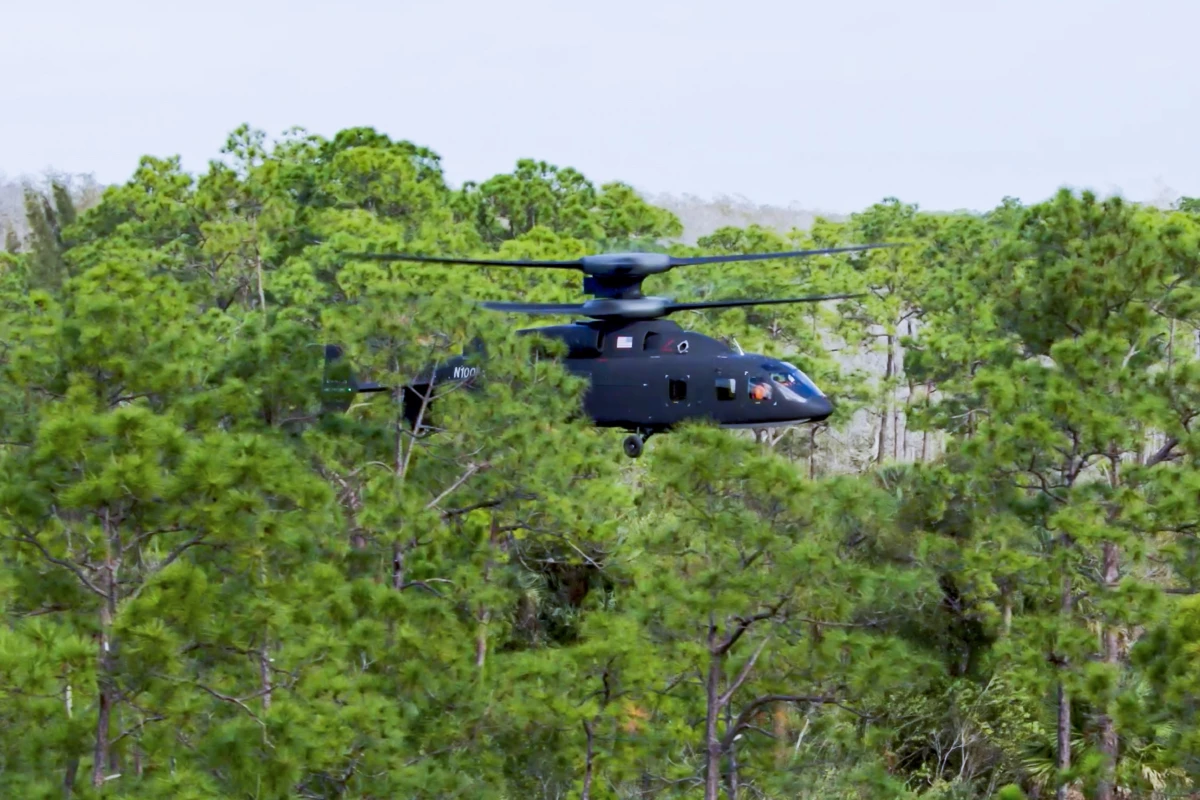With the decision on the replacement of the US Army's UH-60 Black Hawk fleet coming down to the wire, the partners behind the Lockheed Martin Sikorsky-Boeing SB>1 Defiant have announced that their candidate advanced rotorcraft has completed its first mission profile test flights.
The January 5 test flight was conducted to show off the strengths of the Defiant's design and its ability to meet assigned mission requirements that would make it a suitable replacement for the Black Hawk, as opposed to the rival Bell V-280 Valor tiltrotor aircraft being developed by Bell and Lockheed Martin.
During the flight, the Defiant, with its coaxial rotors, reached a speed of 236 knots (272 mph, 437 km/h) in level flight. This is not only about twice the speed of the average helicopter, but the Defiant has a rear propulsor rotor that allows it to rapidly decelerate by reducing forward thrust. According to Bill Fell, Defiant chief flight test pilot at Sikorsky, this also keeps the craft level while slowing down instead of pitching the nose up like a conventional helicopter, providing better visibility for the pilot.
This is especially important because part of the mission profile is for the Defiant to be able to land in a confined space, such as closely planted trees around a small clearing, with very little delay between approaching at speed and switching to a near-vertical descent.
In addition to high-speed approaches and landings, the Defiant also carried out a series of 60-degree banked turns, demonstrated the ability to lift a 5,300 lb (2,400 kg) Guided Multiple Launch Rocket System as an external load, and used its fly-by-wire controls and Sikorsky X2 Technology for low-speed agility. By combining high-speed with low-speed maneuvering, the Defiant is capable of handling low-altitude flight in combat zones for greater survivability.
The Defiant X weapon system is being developed by the partners as a candidate for the US Army's Future Long-Range Assault Aircraft (FLRAA) competition as part of the Army’s Future Vertical Lift program. The goal is to have a machine that can not only replace the Black Hawk, but provide greater flight capabilities and twice the range.
"It’s what we call building combat power rapidly, and aircraft like the Defiant X can do that," said Tony Crutchfield, retired US Army Lieutenant General and vice president of Army Systems at Boeing. "In the Pacific, it’s even more important because your lines of operation are going to be dispersed over a wide area; you’re going to have these small bases and supply lines that’ll be positioned either on ships or on islands. You’re going to want to move more assets, maneuver in confined terrain and survive to build that combat power faster than your adversary can – so you can win."
The video below shows the Defiant X going through its paces.
Update (January 21, 2020): An earlier version of this article misstated that the Defiant X was competing with the Bell 360 Invictus to be the Black Hawk replacement. This was incorrect. It is up against the Bell V-280 Valor. Our apologies for the error, which has now been corrected, and thanks to the readers who brought this to our attention.
Source: Boeing





